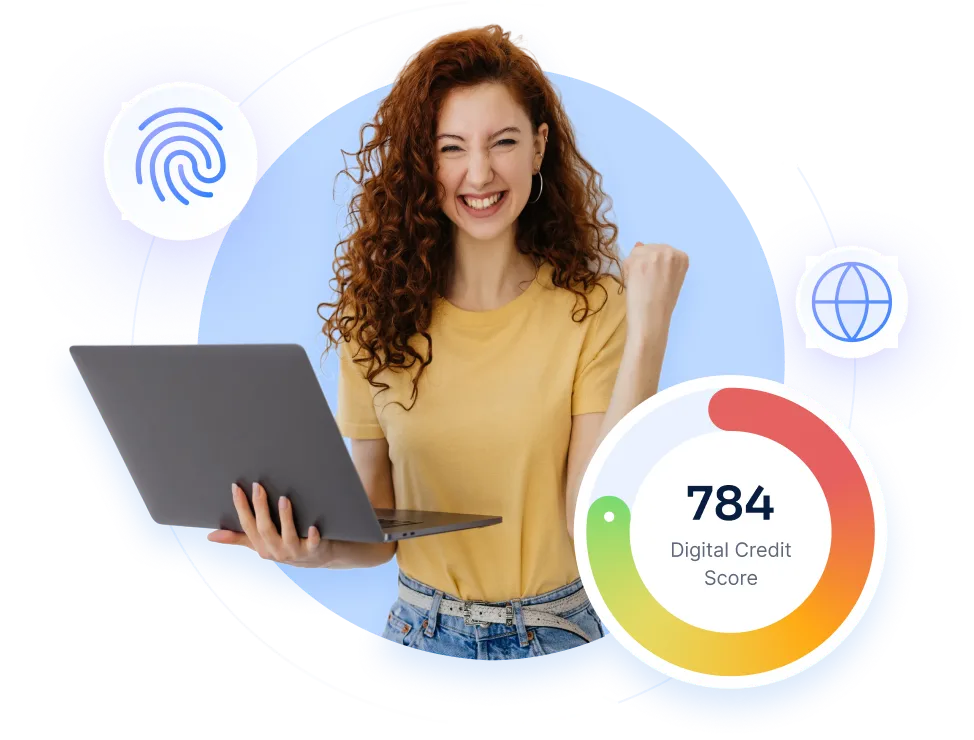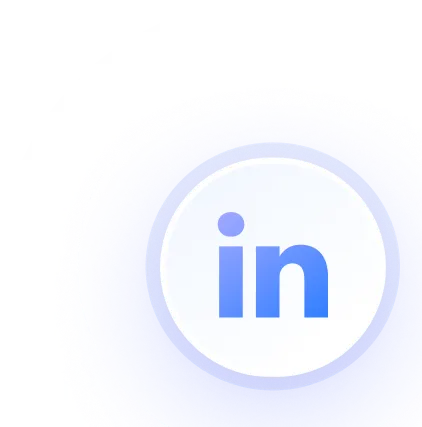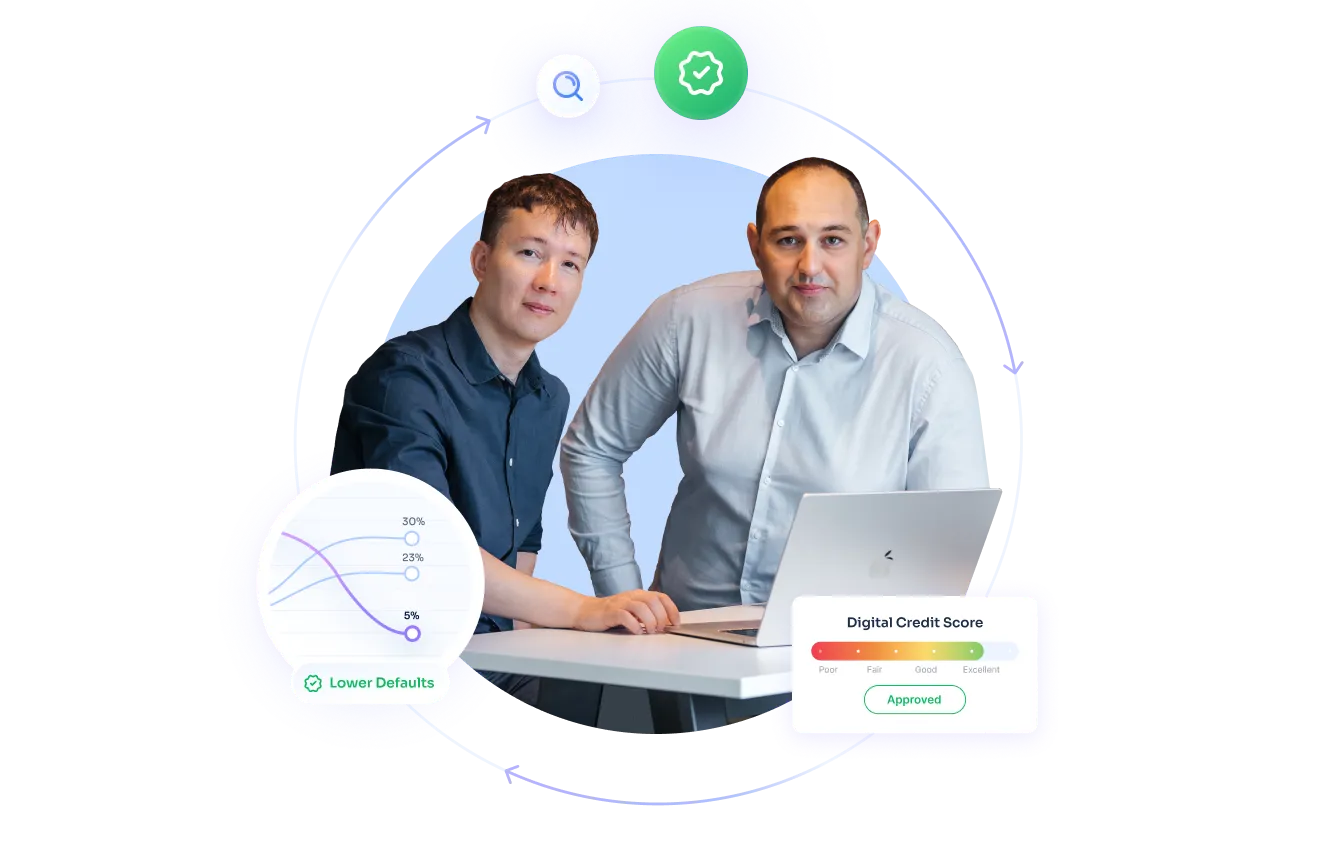Alternative Data as a Game-Changer for Online Lenders
Discover how the use of alternative data can turn millions of users without credit history into valuable clients.

The traditional approach of credit institutions to assessing borrowers involves examining their credit history. However, traditional data alone may not provide a complete picture of a borrower's financial capacity.
I'll explain with an example why this is the case.
According to TransUnion, millions of consumers have never had any credit products. For instance, in the United States, this figure is 8.1 million people; in India, it's 571 million, accounting for 63% of the country's adult population.

This means that the chances of these millions of consumers getting a loan are quite low. Traditional lending organizations often avoid lending money to clients without a credit history. It's because they cannot assess their creditworthiness.
That's why I want to discuss lenders using alternative data analysis to assess credit risks and the opportunities they create for lending institutions.

Recent technological advancements have made alternative data more popular in credit scoring for fintech. These include AI and its ML applications, GenAI, the Internet of Things, predictive analytics, , and advanced tools for managing fintech credit risk.
Why do lenders use alternative data sources?
According to Research and Markets, the size of the alternative data market is expected to reach $156.23 billion by 2030.

The industry's rapid growth is driven by modern credit organizations' inability to use alternative data types in business.
Relying only on credit scores leads to missed clients, reduced competitiveness, and income loss. Institutions need to reconsider their decision-making.
How alternative data can help credit organizations
Next, I suggest a detailed discussion on how alternative data analysis helps companies involved in lending.
Expansion of the target audience
Lending institutions can approve more loans. They need to use more than traditional data sources. They can extend credit to potential clients with low ratings due to a lack of credit history.
Risk assessment optimization
Lenders can understand a borrower's finances better by checking extra details. Even if someone repays loans on time, they might still have late payments for utilities or rent.
This is where digital footprint assessment becomes valuable, helping to capture behavioral signals beyond traditional data.
Modern fintech tools also use AI-powered predictive analytics. They process vast amounts of data, track trends and patterns, and make informed decisions about granting loans.
Using alternative data is crucial in current lending trends. It provides extra information about the borrower and helps decide on loan applications.

Minimization of fraud cases
Lending companies can use alternative data sources to check client identities. Also, AI and ML software can find suspicious behavior linked to fraud.
Extra information about potential clients is crucial for lending organizations' success.
Next, let's define what we mean by alternative data and discuss their examples below.
Types of alternative data used by credit organizations
Modern lending institutions use alternative data to evaluate borrowers' creditworthiness.
These include:
- Social media data. Statista says over 4.95 billion people, more than 61% of the world, use social media. Information from this source confirms a borrower's identity, social status, and other details.
- Online behavior and transactions. Statista's experts say there are over 5.3 billion internet users globally, making up more than 65% of the world's population. AI-based tech can track their online activities for precise credit decisions.

- Utility and rental payments. Thanks to alternative data, lending companies can assess potential clients' financial status even without a credit history. This includes considering the timeliness of payments for utilities or rent.
- Mobile phone usage data. Information about subscribers from telecom companies can be tricky due to privacy concerns. However, if the borrower agrees, lenders can get useful data from their communication history.
For example, regular prepaid mobile payments may show responsibility and a stable income. Also, active hours from 9:00 to 18:00 suggest steady employment.
- Education and employment data. If borrowers lack a credit history, higher education or work experience can help them get a loan.
- Public records. Every state has a public records registry. Credit organizations can check for any claims against the applicant.
In New York, banks do a U.C.C. Search through the government portal ny.gov. It provides detailed information about debtors.
Benefits of using alternative data
Alternative data can strengthen your position in the fast-changing financial industry. It offers several advantages.
Enhanced predictive analytics
Technologies based on AI, including predictive analytics, rely on the data they use. The more variables considered by predictive models, the more accurate the analysis results will be.
This helps predict financial indicators for borrowers, consumer demand, and market trends.
Faster decision-making
Two factors contribute to this:
- Almost all alternative data is available 24/7 in real-time.
- Innovative digital solutions can process more information much faster than a human.
Many popular software products can make a credit decision in just a few seconds.
Improved customer experience
Automated credit scoring models using alternative data are based on ML. This reduces the number of errors humans make in the underwriting process. It also reduces the time and cost of loan issuance.
Cost-efficiency
Trying alternative data providers can be cheaper than traditional ones. This advantage is especially relevant for small companies with limited resources.
Alternative data - the future of successful lending
The more someone is active online, the better their chances of getting credit, even without a long credit history.
But, it only works if the lender uses alternative data. These include social networks, online transactions, and utility and rental payment details.
Enriching traditional financial risk assessment with alternative data can benefit credit organizations and their clients. Therefore, I recommend following the latest trends in the financial sector. Positive outcomes will follow.
RiskSeal – your reliable guide in the world of digital credit scoring
RiskSeal offers the benefits of automated credit scoring through alternative data.
With RiskSeal, lending organizations can:
- Enter new markets where traditional data sources may be unavailable.
- Analyze borrowers' digital footprint in seconds and identify potential defaulters.
- Determine reliable customers, giving a full understanding of their reliability.
RiskSeal is based on ML technology, minimizing errors and providing a rapid response to loan applications.

Download Your Free Resource
Get a practical, easy-to-use reference packed with insights you can apply right away.

Download Your Free Resource
Get a practical, easy-to-use reference packed with insights you can apply right away.




FAQ
Does RiskSeal offer solutions related to alternative data?

Yes, RiskSeal offers such solutions. We created a modern credit scoring model for online lenders. It uses machine learning to process thousands of data points.
What is the significance of alternative data for lenders in today's financial landscape?

Lenders use alternative data to better understand borrowers, lower loan costs, provide favorable interest rates, and boost competitiveness.
How does alternative data contribute to expanded credit access?

Alternative data sources allow lenders to extend credit to customers without a credit history. Credit organizations often avoid lending to consumers with low credit ratings in traditional risk assessments.
In what ways do alternative data improve risk assessment for online lenders?

Using alternative data analysis, lenders can assess a borrower's creditworthiness and identify potential defaulters early on.
How can credit scoring with alternative data improve the customer experience?

Consumers can increase their chances of obtaining credit, even if they have never used such services. They can also expect faster decision-making on their applications.
Is it accurate that certain alternative data sources are more cost-efficient compared to traditional ones?

Turning to alternative data providers can be more cost-effective than traditional financial information. This is particularly relevant for small lending organizations.

.svg)
.webp)



.webp)
%20(1).webp)